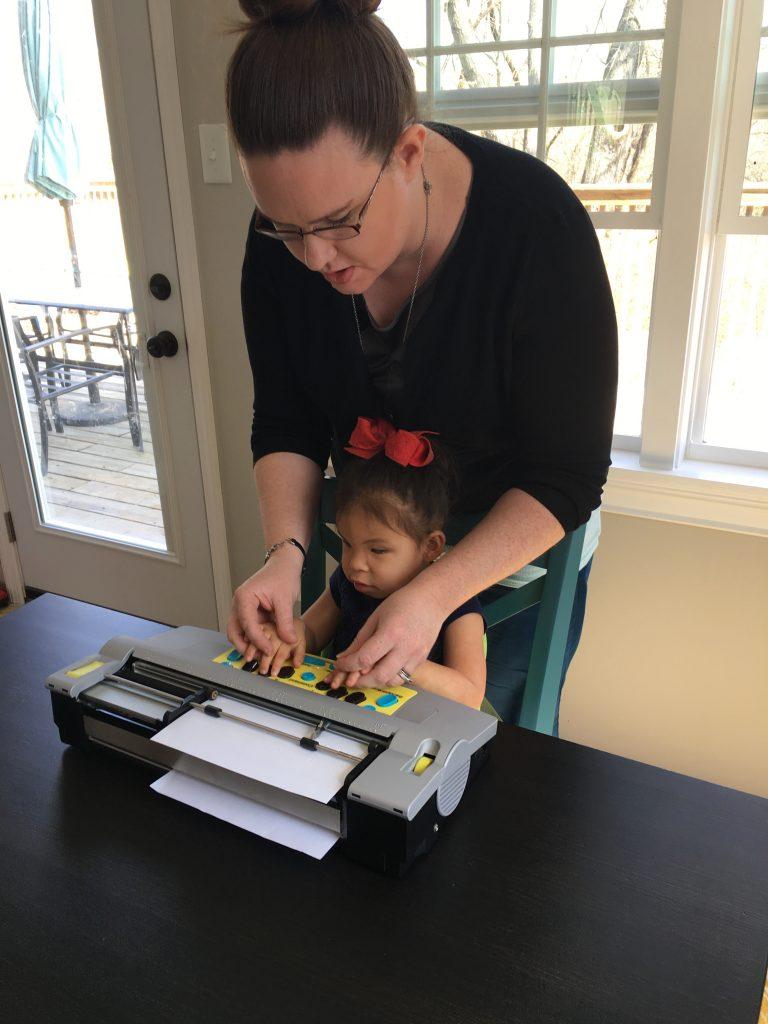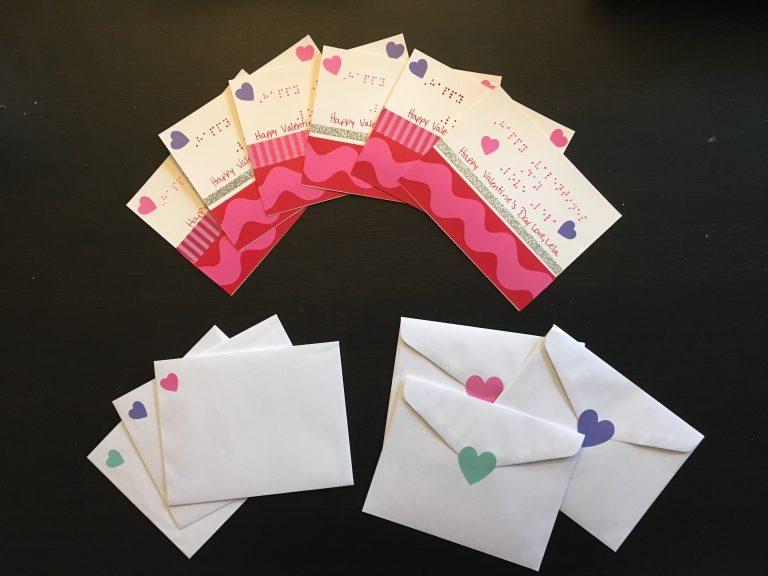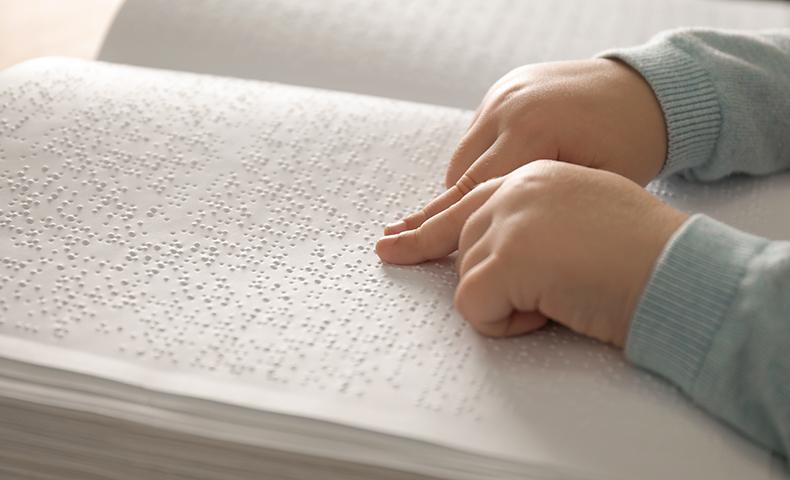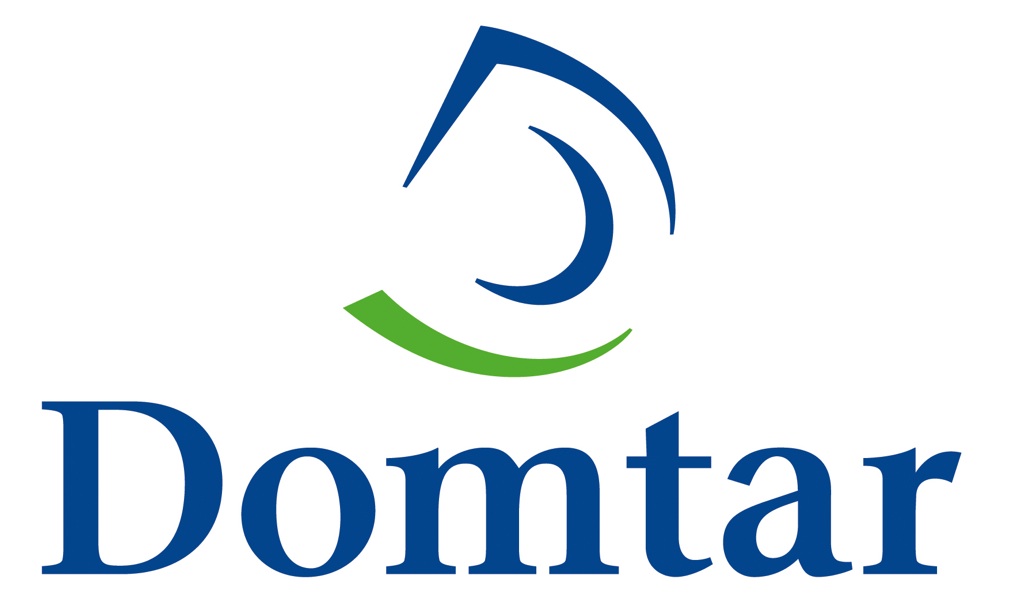Paper Plays an Important Role in Braille Literacy
Posted from the Domtar's Newsroom
Three-year-old Lela Imhoff is a happy preschooler who is curious about the world around her. She’s busy learning to recognize numbers and letters, and how to read and write her name. She also happens to be blind. For Lela, early exposure to braille literacy, particularly braille printed on paper, will ensure she’s ready to enter kindergarten, just like any other child.
“We want Lela to be just as academically prepared for kindergarten as our other children were,” says Carrie Sutherland, Lela’s mom. “That means starting early by labeling items in the house with braille tags and providing access to braille books and a braille typewriter. Anything a typical three-year-old would do with print, we’re doing with braille on paper.”
Braille Literacy Ensures Accessibility
Braille, developed by Louis Braille in the early 19th century, is a system of raised dots that represent letters, numbers and symbols. The braille alphabet can be embossed on paper, molded into plastic, stamped into metal or used on other materials so that people who are visually impaired can read by running their fingers over the braille text.
As with reading by sight, braille literacy is essential to early childhood development, and it has been linked to greater satisfaction, self-esteem and employment success later in life for those living with visual impairments.
“Whenever you have a sighted child, you hear all about the importance of singing to them, reading books with them and showing pictures to them. You have to do the same thing for a child who is visually impaired,” says Tara Uding, Teacher of Students with Visual Impairments (TVI). Uding works for the Delta Gamma Center for Children with Visual Impairments in Richmond Heights, Missouri, near St. Louis. Delta Gamma Center offers several support services, including braille literacy instruction, for children with visual impairments.
Uding says there’s a common misconception that assistive technology, such as text-to-voice software and electronic note writers, has eliminated the need for braille literacy. This notion can be especially common in mainstream schools, where studies have shown that students with visual impairments can have a difficult time accessing braille textbooks or braille literacy instruction. For these students, it can feel like being told reading is unnecessary.
“People wonder why we still teach braille when you can have a computer read to you,” she says. “But that takes away independence. No one wants to rely on a computer to read everything to you. As a sighted person, you might still want to pick up a paper book instead of reading it on a tablet. Assistive technology is amazing, but it’s not always an adequate substitute for braille. You also have to know braille before you can use some of those important tools. We want to make sure all opportunities are equal, and that’s what early braille literacy provides.”
Sutherland agrees. “In Lela’s preschool, there are words everywhere in the classroom, and sighted kids are seeing those words and making those connections to literacy. We make sure she has the same opportunity to do so with braille,” she says. “Everything in the room is labeled in braille, the daily report from her teachers is written in braille, and any time kids are working with paper, she’s working with paper too. She writes in braille the way other kids write with crayons, even if it’s just scribbling.”
Those early braille literacy skills will help Lela as she gets older. Paper will play as much a role in her life as it does in anyone’s life, sighted or not. “Think about how much you use paper in your daily life — making a grocery list or taking notes while you’re on the phone,” says Sutherland. “Without braille literacy and access to low-tech and affordable tools like a Perkins Brailler and paper, you’d have to rely on your memory for those items.”
Braille Literacy: More Alike Than Different
Sutherland’s goal is to normalize braille so that it becomes just another part of who Lela is. “It’s just how she receives and communicates information on paper, so we have introduced it to her classmates by creating braille Valentine’s cards, for example, and encouraging questions,” she says. “One parent I know says her son calls his braille literacy a superpower, and that’s how they approach it. His classmates now wish they could read braille.”
When it comes to braille literacy and educational accessibility, paper can be a vital tool for people who are blind or have low vision. And paper is just as important in educational outcomes for students with visual impairments as it is for sighted students. Learn more about the benefits of paper in education and literacy:




